Within the Monks who dedicate themselves to studying the Way of the Ascendant Dragon lies a powerful warrior spirit capable of channeling draconic might.
Through meditation, discipline, and training these Monks unlock that draconic power within themselves. What results from this is a warrior like no other.
Are you ready to awaken the dragon with you?
This is the Complete Guide to the Way of the Ascendant Dragon Monk in D&D 5e!
What is the Ascendant Dragon Monk in D&D 5e?
According to legends that have been passed down for generations, the Way of the Ascendant Dragon was founded by the dragon god Bahamut himself.
Considering his tendency to travel the lands in the guise of a simple Monk, it makes sense to claim that the first monastery dedicated to this tradition was started by Bahamut.
In the many years since, the tradition is still just as powerful as it is protected by its followers. Following the teachings and martial training of the Ascendant Dragon, these Monks embody both the might and wisdom of dragons in all that they do.
The ultimate goal of the Way of the Ascendant Dragon is to achieve a spiritual unity with the essence of the Material Plane. In pursuit of this goal, Monks of this tradition dedicate themselves fully to a draconic mastery of both their mind and their body.
Naturally, these Monks are likely to take these pursuits just as strongly as a Paladin would take their oath. After all, it is Bahamut himself who shared the secrets of this tradition to begin with!
In a sense, their meditations and training could very easily be a way of paying reverence to the Platinum Dragon!
The Way of the Ascendant Dragon is a Monk subclass that was introduced to D&D 5e in Fizban’s Treasury of Dragons. As with other Monk subclasses, you can take this as your Monastic Tradition at level 3.
Role in the Party
The Ascendant Dragon Monk focuses heavily on growing their own power by channeling dragons. Even by Monk standards, they hit hard and fast!
In combat, the Ascendant Dragon Monk is able to channel dragons’ elemental abilities with their attacks. This is useful for getting around enemies’ resistances as well as exploiting any elemental weaknesses they might have.
Additionally, Ascendant Dragon Monks are able to gain some AoE options with their Breath of the Dragon and Ascendant Aspect features.
When they hit level 11, they’re able to create an aura that gives nearby allies resistance to a chosen elemental damage type.
Oh, and, Ascendant Dragon Monks are also able to fly short distances which adds an entirely new level to their already-amazing mobility.
Like most Monks, the Ascendant Dragon Monk is primarily a melee striker in their party. Their Dexterity and Wisdom scores also make them useful as scouts.
Unlike most other Monks, however, the Ascendant Dragon brings some AoE features to the table. With the power of the dragon supporting them, this gives these characters a better ability to deal with larger groups of enemies.
Also check out: Monk Weapons in D&D 5e Explained
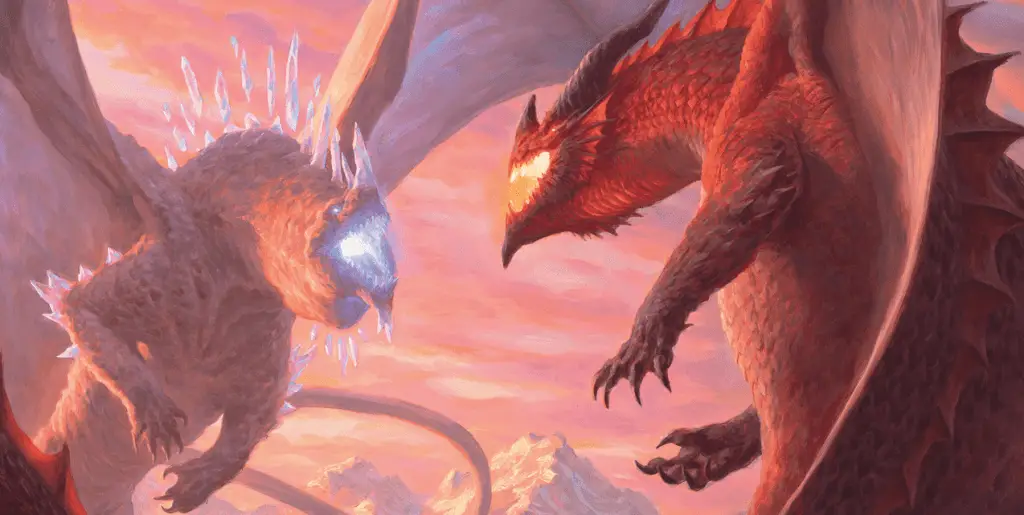
Ascendant Dragon Monk Features 5e
So you spend your life dedicated to the discipline of the Way of the Ascendant Dragon Monk, but what do you get to show for it?
Well, quite a bit actually!
So let’s take a closer look at what you can expect to gain from this Monk subclass!
Draconic Disciple (Level 3)
The first of two features that you get upon choosing the Way of the Ascendant Dragon at level 3 is Draconic Disciple.
As a student of the Ascendant Dragon tradition, you’re able to channel the power of dragons into both your presence and martial prowess.
This feature gives you three benefits:
Draconic Presence lets you use a reaction to reroll a failed Charisma (Intimidation) or Charisma (Persuasion) check. Once this turns a failure into a success, you can’t use it again until you finish a long rest. (If the reroll isn’t enough to tilt the situation in your favor, you can still use this again later!)
Draconic Strike adds elemental damage to your unarmed strikes with the essence of dragons’ breath attacks. Specifically, you choose whether you want the damage type to be acid, cold, fire, lightning, or poison damage. If you know an enemy has a weakness to one of these, you can absolutely punish them!
Lastly, Tongue of Dragons allows you to speak, read, and write Draconic. If you already know Draconic or just prefer a different language, you can use this to speak, read, and write another language instead.
Not bad at all for level 3, huh?
Breath of the Dragon (Level 3)
Your second level three feature as an Ascendant Dragon Monk is Breath of the Dragon.
When you take the Attack action on your turn, you can replace one of the attacks with an exhalation of draconic energy in either a 20-foot cone or a 30-foot line that is 5 feet wide (your choice).
Choose a damage type: acid, cold, fire, lightning, or poison.
Each creature in that area must make a Dexterity saving throw against your ki save DC. On a failure, creatures take damage of the chosen type equal to two rolls of your Martial Arts die. On a success, creatures take half as much damage.
This ability has the potential to be absolutely destructive if you can line it up right. Amidst your barrage of punches and kicks, your enemies also have to watch out for a blast of elemental damage!
Even better, when you hit level 11 the damage from this ability increases to three rolls of your martial arts die!
Breath of the Dragon can be used a number of times equal to your proficiency bonus and recharges on a long rest. If you don’t have any charges left but have some extra ki points, you can instead spend 2 ki points to use this feature again!
You Might Like: Mastering the Monk’s Stunning Strike in D&D 5e
Wings Unfurled (Level 6)
Monks already tend to have some great mobility, but Wings Unfurled lets the Ascendant Dragon Monk take to the air!
When you use the Monk’s Step of the Wind feature, spectral dragon wings appear from your back until the end of your turn. While these wings are out, you have a flying speed equal to your movement speed!
This can be great for dealing with a pesky flying enemy, navigating traps or obstacles, or getting the jump on someone. In an emergency, it can also save your life!
You’re able to use this feature a number of times equal to your proficiency bonus. All expended uses of Wings Unfurled recharge on a long rest.
The main drawback to Wings Unfurled is that you have to spend a ki point for Step of the Wind to activate it. From there, you have to make it count since the wings disappear at the end of your turn.
You probably won’t get a ton of use out of this feature, but you’ll likely be glad to have it when you need it!
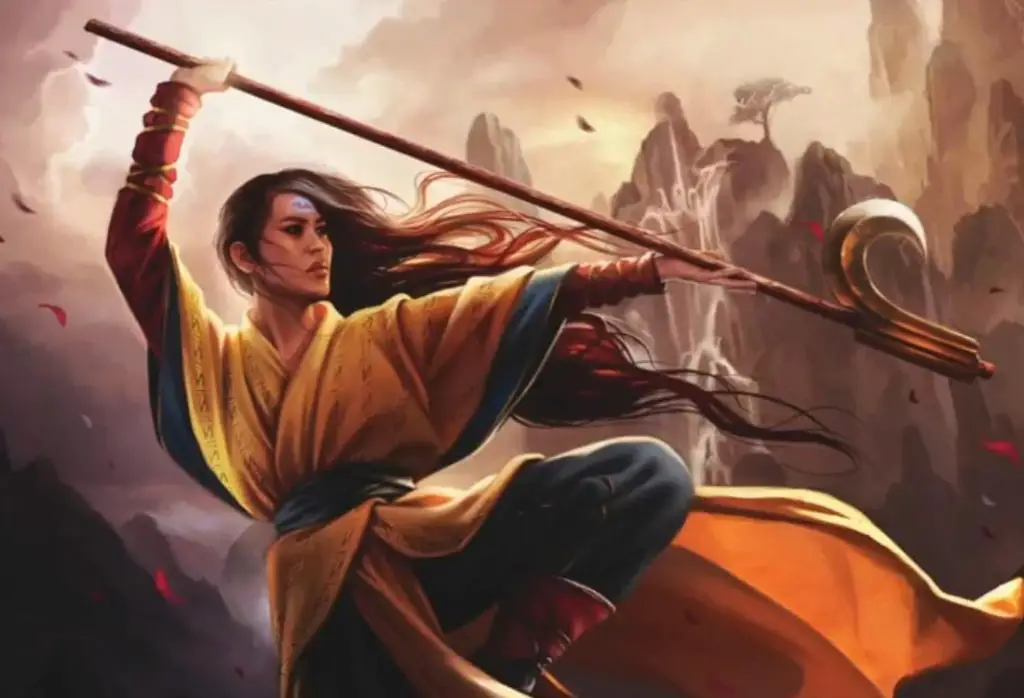
Aspect of the Wyrm (Level 11)
Your level 11 feature, Aspect of the Wyrm, is another ability that gives you two options for how you use it.
In both cases, you use a bonus action to create a draconic aura 10 feet around yourself for 1 minute. You can do this once per long rest unless you spend 3 ki points to do it again.
From there, you choose one of two effects for the aura. Let’s take a look at your options!
Frightful Presence
The first option is Frightful Presence which gives your character a bit of battlefield control.
When you create this aura, and as a bonus action on subsequent turns, you can choose a creature within the aura.
The target must succeed on a Wisdom saving throw against your ki save DC or become frightened of you for 1 minute.
The target can repeat the saving throw at the end of each of its turns, ending the effect on itself on a successful save.
Frightful Presence is decent but still strikes me as being pretty situational. The Frightened condition is pretty brutal, but you need to have the enemies be within 10 feet of you AND fail a Wisdom save every turn to get value out of this.
Considering that you’re using a bonus action to force them to make a save instead your flurry of blows, I’m not sure that this should be a go-to tactic in most situations.
Resistance
Using your Aspect of the Wyrm’s Resistance option lets you give a pretty potent defensive buff to your nearby allies.
Choose a damage type when you activate this aura: acid, cold, fire, lightning, or poison.
You and your allies within the aura have resistance to that damage.
Against enemies that are fond of certain types of elemental attacks, this alone can tilt the scales in your favor.
As a Monk, you’re almost certainly right in the enemy’s face in combat. If you’ve got your Resistance aura up, all of your front-line allies are gaining the benefit as well.
Choosing a damage type that the enemy favors to resist means that their damage output just got cut in half.
Personally, I think this is the best usage of your Aspect of the Wyrm. However, it does rely on you knowing what kind of elemental damage the enemy is going to be using.
Some are pretty easy to anticipate. A Frost Salamander is going to use cold attacks while an Efreeti is going to use fire damage.
It’s when you find yourself surrounded by more unpredictable enemies that it might be a better idea to use the Frightful Presence aura instead.
All in all, be aware of what both auras do so that you can use the right one in any situation!
Ascendant Aspect (Level 17)
Finally, at level 17 you get the Ascendant Dragon Monk’s capstone ability: Ascendant Aspect.
This feature is all about further enhancing your existing abilities.
You gain three benefits:
Augment Breath buffs your Breath of the Dragon feature. Now, you can spend 1 ki point to increase its size and damage. The shape becomes your choice of either a 60-foot cone or 90-foot line that is 5-feet wide. Creatures hit by your Breath of the Dragon now take damage equal to four rolls of your martial arts die or half as much on a successful save.
Blindsight lets you detect your enemies’ presence within 10 feet even if they’re invisible. Unless a creature is behind cover or successfully manages to hide from you, you can spot it. Even if you’re blinded or in total darkness, nothing will slip past you!
Lastly, Explosive Fury enhances the aura provided to you by the Aspect of the Wyrm feature.
When you activate that aura, you choose a type of damage (acid, cold, fire, lightning, or poison) to explode from you. Choose any number of creatures within 10 feet of you. Those creatures make a Dexterity saving throw against your ki save DC or take 3d10 of the select type of damage.

Connections
So how might you connect an Ascendant Dragon Monk to the story and party?
Just as Bahamut traveled in the form of a monk, an Ascendant Dragon Monk might find themselves on a kind of spiritual journey. By following in Bahamut’s footsteps, they seek to experience and learn everything that the world has to teach.
A pilgrimage can make for a great way to connect your character with both the world and the party. After all, there are plenty of sights to see and companions to meet as an adventurer!
For locations that aren’t explicitly draconic, your DM can add in some draconic flair. A location might have been visited by Bahamut in ancient legends or be home to a library with information about the Platinum Dragon.
Also Check Out: The Full Monk Class Guide for D&D 5e!
Is the Ascendant Dragon Monk Good?
The Ascendant Dragon Monk is best at fishing for enemies’ elemental damage vulnerabilities and exploiting them.
Mixing in this subclass’s ability to throw down some solid AoE damage and grant allies resistance against certain elemental damage types, you’ve got a Monk subclass that adds damage output and extra utility/support for the party.
Unfortunately, the Ascendant Dragon Monk just isn’t a strong subclass pick. It spreads itself thin with abilities that are flashy and exciting but ultimately contribute very little.
It hurts me to bash on this subclass as I generally like to look for the positives with any subclass. Bringing in draconic abilities and mixing them with all of the Monk class’s awesomeness seemed like a great idea, but the execution just isn’t really there.
Gripes
My chief gripes about the Ascendant Dragon Monk are:
- The flying speed from Wings Unfurled is so minor of a feature that it feels like an afterthought. Maybe it’s good in a pinch, but it’s even further limited by requiring a ki point to activate it with Step of the Wind.
- Most features (particularly elemental damage) have very limited application. The enemy has to have an elemental vulnerability AND you have to know what it is AND you need to factor that into your action economy.
- Aspect of the Wyrm’s Frightful Presence takes a bonus action which means you’re focusing on trying to keep an enemy frightened instead of maximizing your damage output with Flurry of Blows.
- Explosive Fury from the Ascendant Aspect doesn’t even deal partial damage if an enemy succeeds on their saving throw. That’s a major letdown (especially from a capstone ability).
- A good subclass should build on a core aspect of the base class as a type of specialization. If it’s going to do something different, it should still have synergy with the base class. The Ascendant Dragon tries to do so much that it feels unfocused and disjointed in a way that makes it seem like it’s actively fighting against the core Monk features.
- It’s very niche with many of its abilities and will easily chew through your ki points with sub-optimal features if you aren’t careful.
I wanted to like the Ascendant Dragon Monk so much, but I just can’t. There’s some interesting theming to the subclass, but the mechanics leave a fair bit to be desired.
Is it possible to make, play, and love an Ascendant Dragon Monk? Absolutely.
Can I honestly call this a “good” subclass option? No.
Still, it’s not the Monk’s worst pick. You can see the best and worst Monastic Traditions in my full Monk subclass ranking article!
Conclusion – Guide to the Ascendant Dragon Monk in D&D 5e
It makes me sad to bash a subclass so hard, but it’s an uncomfortable truth that has to be shared.
Monks are a fun and exciting class so my hopes were high with this one. I was totally ready to make a supercharged Enter the Dragon kind of character in one of my home games with this subclass prior to reading it.
That said, I’m super curious if anyone out there has a different opinion on this subclass. Whether you agree or disagree, I’d love to read your thoughts in the comment section below!
With this guide, I’m kicking off the next group of D&D 5e class guides where we’ll be taking deep dives with all of the Monk subclasses. If there’s one you’d like to see next, let me know!
Want all the latest player guides, DM tips, news, reviews, and more for D&D 5e? Sign up for the Tabletop Joab newsletter below!
You can also follow me on Facebook and Twitter.
If you found this article helpful and want to support the site, you can buy me a coffee here! (It’s not expected, but very appreciated!)

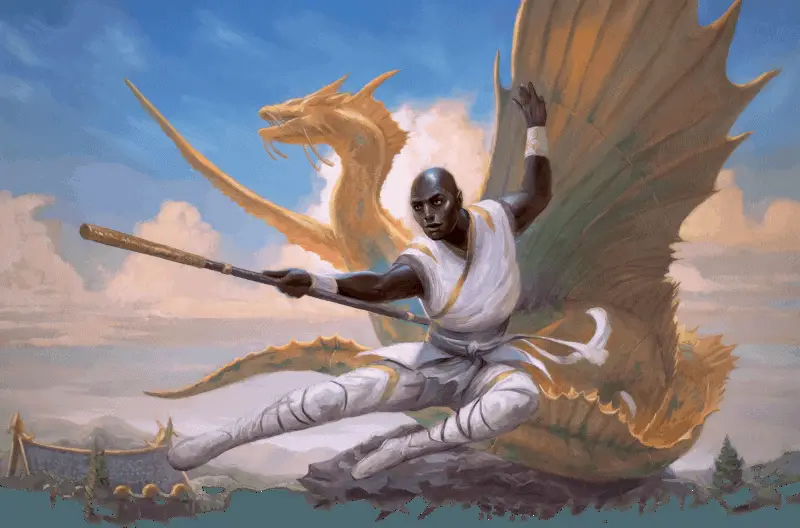


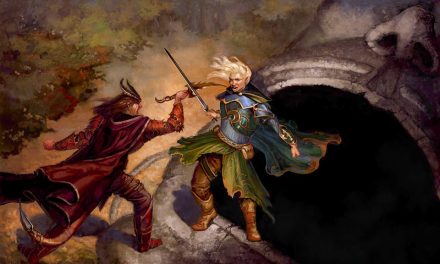
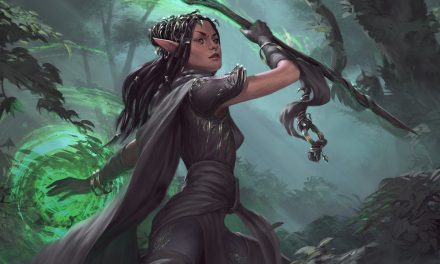




Recent Comments